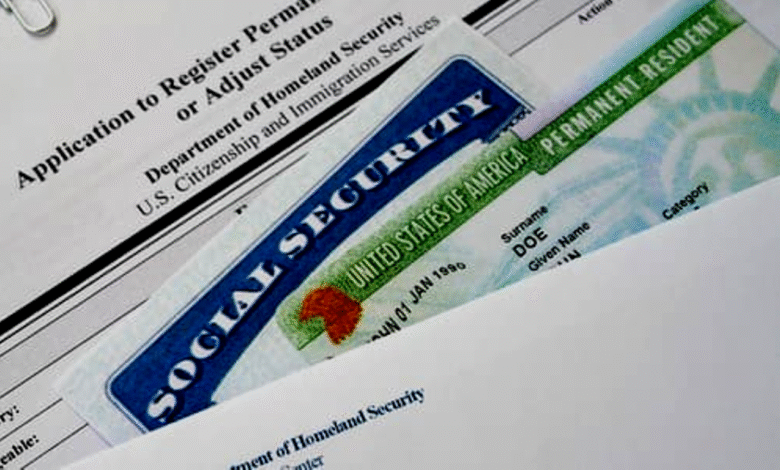Green Card Process in California 2025 Immigration Lawyer Tips
Green Card process in California Get 2025 lawyer tips for family employment & asylum cases Avoid denials & delays with expert guidance Apply successfully today.

The Green Card process in California is a critical pathway to permanent residency but navigating it successfully in 2025 requires up-to-date knowledge of immigration laws and procedures. With shifting policies, extended processing times, and evolving eligibility criteria, applicants must stay informed to avoid costly delays or denials. This guide provides expert insights from immigration lawyers on the most common pathways family-based, employment-based, asylum, and the Diversity Visa Lottery along with essential tips to strengthen your application. Whether you’re sponsoring a relative, seeking work-based residency, or applying for humanitarian protection, understanding the latest requirements will help streamline your journey to securing a Green Card in California.
As one of the top destinations for immigrants, California offers unique opportunities but also presents challenges due to high application volumes and USCIS backlogs. In 2025, applicants must be prepared for stricter scrutiny, longer wait times, and potential policy changes that could impact their cases. From gathering the right documentation to preparing for interviews, this guide breaks down each step of the process with actionable advice from legal professionals. By following these expert tips, you can maximize your chances of approval and avoid common pitfalls in the Green Card process in California.
Green Card Process in California 2025 Immigration Lawyer Tips
Family-Based Green Cards
Family-sponsored immigration remains one of the most accessible routes. U.S. citizens and lawful permanent residents (LPRs) can petition for certain relatives, including spouses, children, parents, and siblings. In 2025, processing times may vary significantly depending on the relationship and the petitioner’s status. Immediate relatives of U.S. citizens (spouses, unmarried children under 21, and parents) typically face no annual caps, while preference categories (such as married children or siblings) may experience longer waits due to visa backlogs.
Employment-Based Green Cards
California’s thriving job market makes employment-based immigration a popular choice. The EB-1, EB-2, and EB-3 categories cater to priority workers, professionals with advanced degrees, and skilled workers, respectively. In 2025, STEM professionals and healthcare workers may benefit from expedited processing under certain policies. Employers must complete the PERM labor certification (unless exempt) and file an I-140 petition before the employee can apply for adjustment of status.
Asylum and Refugee Status
Those fleeing persecution may apply for asylum within one year of arrival or seek a Green Card after one year of approved asylum status. California has several USCIS offices specializing in humanitarian cases, but recent policy shifts have increased scrutiny on asylum claims. Working with an experienced immigration lawyer can strengthen an applicant’s case by ensuring proper evidence and legal arguments are presented.
Diversity Visa Lottery
The DV Lottery provides up to 55,000 Green Cards annually to individuals from underrepresented countries. Winners must meet strict education or work experience requirements and undergo consular processing. Due to high fraud risks, applicants should verify their eligibility and submit accurate information to avoid disqualification.
Adjustment of Status vs. Consular Processing
Applicants already in the U.S. may file for adjustment of status (Form I-485), while those abroad must undergo consular processing. California residents benefit from multiple USCIS field offices, but delays can occur due to high application volumes. An immigration attorney can help determine the fastest route based on individual circumstances.
Key Challenges in the 2025 Green Card Process
Long Processing Times
USCIS backlogs remain a major hurdle, particularly for family-based and employment-based petitions. Applicants should monitor case statuses online and consider premium processing (where available) to reduce waiting periods.
Changing Immigration Policies
Eligibility Changes: 2025 updates may modify qualifying criteria for certain visa categories, particularly employment-based (EB) and family-sponsored petitions, with potential new restrictions or expanded opportunities in STEM fields.
Increased Scrutiny on Applications
Enhanced Verification Protocols USCIS now employs advanced document authentication systems and cross-checks applications with multiple government databases, requiring applicants to provide certified translations, original documents, and consistent information across all forms. Consequences of Inconsistencies Even minor discrepancies may trigger Requests for Evidence (RFEs).
Public Charge Rule Considerations
Revised Public Charge Standards Under 2025 guidelines, USCIS evaluates whether applicants are likely to depend on government benefits like Medicaid or cash assistance, using factors like income, credit history, and employment status. Required Documentation Submit recent tax returns, pay stubs, employment verification letters, or a Form I-864 (Affidavit of Support) from a sponsor to prove financial self-sufficiency.
Expert Tips from Immigration Lawyers
Begin Document Collection Immediately
The Green Card process in California requires extensive paperwork, including birth certificates, marriage licenses, divorce decrees (if applicable), passport-style photos, and financial records like tax returns and pay stubs. Some documents, such as foreign birth certificates or police clearance certificates, may take weeks or months to obtain, especially if they require translations or apostilles. Starting early prevents last-minute delays that could push back your application timeline.
Organize and Verify Documents
USCIS rejects applications with missing or incorrect documentation. Create a checklist of all required forms (such as I-130, I-485, or I-140) and supporting evidence. Ensure names and dates match across all records—discrepancies (e.g., different spellings on birth and marriage certificates) may require affidavits or legal corrections.
Review Every Form for Accuracy
Even minor errors (e.g., typos, unchecked boxes, or incorrect filing fees) can trigger USCIS requests for evidence (RFEs) or denials. Use the latest version of forms from the USCIS website, as outdated forms are rejected outright. For example, the 2025 edition of Form I-485 may have updated questions or fees do not present in prior versions.
Seek a Second Pair of Eyes
Have an immigration lawyer or trusted bilingual advisor review your application if English isn’t your first language. Common pitfalls include misclassifying visa categories (e.g., EB-2 vs. EB-3), omitting prior immigration violations, or failing to disclose all family members. USCIS cross-references applications with government databases, so inconsistencies can lead to fraud allegations.
Read More: Denied Health Insurance Claim in New York? Here’s What to Do Legally
Conclusion
The Green Card process in California remains one of the most important yet complex immigration pathways in 2025, requiring careful preparation and expert guidance. With changing USCIS policies, extended processing times, and increased scrutiny on applications, having a well-documented case and legal support can make all the difference. Whether applying through family sponsorship, employment, or humanitarian relief, understanding the latest requirements and avoiding common mistakes will significantly improve your chances of success.
As California continues to be a top destination for immigrants, staying informed about the evolving Green Card process in California is crucial for a smooth journey to permanent residency. By following the latest updates, preparing thoroughly for interviews, and seeking professional legal advice when needed, applicants can navigate the system with confidence. While delays and challenges may arise, persistence and proper planning will help you achieve your goal of securing a Green Card and building a stable future in the United States.
FAQs
How long does the Green Card process take in California?
Processing times vary by category family-based petitions may take 1-3 years, while employment-based cases can range from 6 months to several years depending on visa availability.
Can I apply for a Green Card without a lawyer?
Yes, but legal guidance is recommended for complex cases, such as prior visa violations or criminal history, to avoid costly mistakes.
What are the common reasons for Green Card denials?
Incomplete forms, insufficient financial proof, past immigration violations, or criminal records can lead to rejection.
Does California offer any state-specific benefits for Green Card applicants?
California provides driver’s licenses, in-state tuition, and healthcare access to eligible immigrants, regardless of status.
Can I travel outside the U.S. while my Green Card application is pending?
Only with advance parole (Form I-131); otherwise, leaving may abandon your application. Consult a lawyer before traveling.











